How to Make Homemade Stock
Stocks are the foundation of classic cooking — they won't dazzle you with their good looks, but surely will with what they bring to your cooking endeavors. Simply follow our fundamental guidelines, including our six principles for making from-scratch stock, and you'll soon be creating amazing soups, stews, and more.
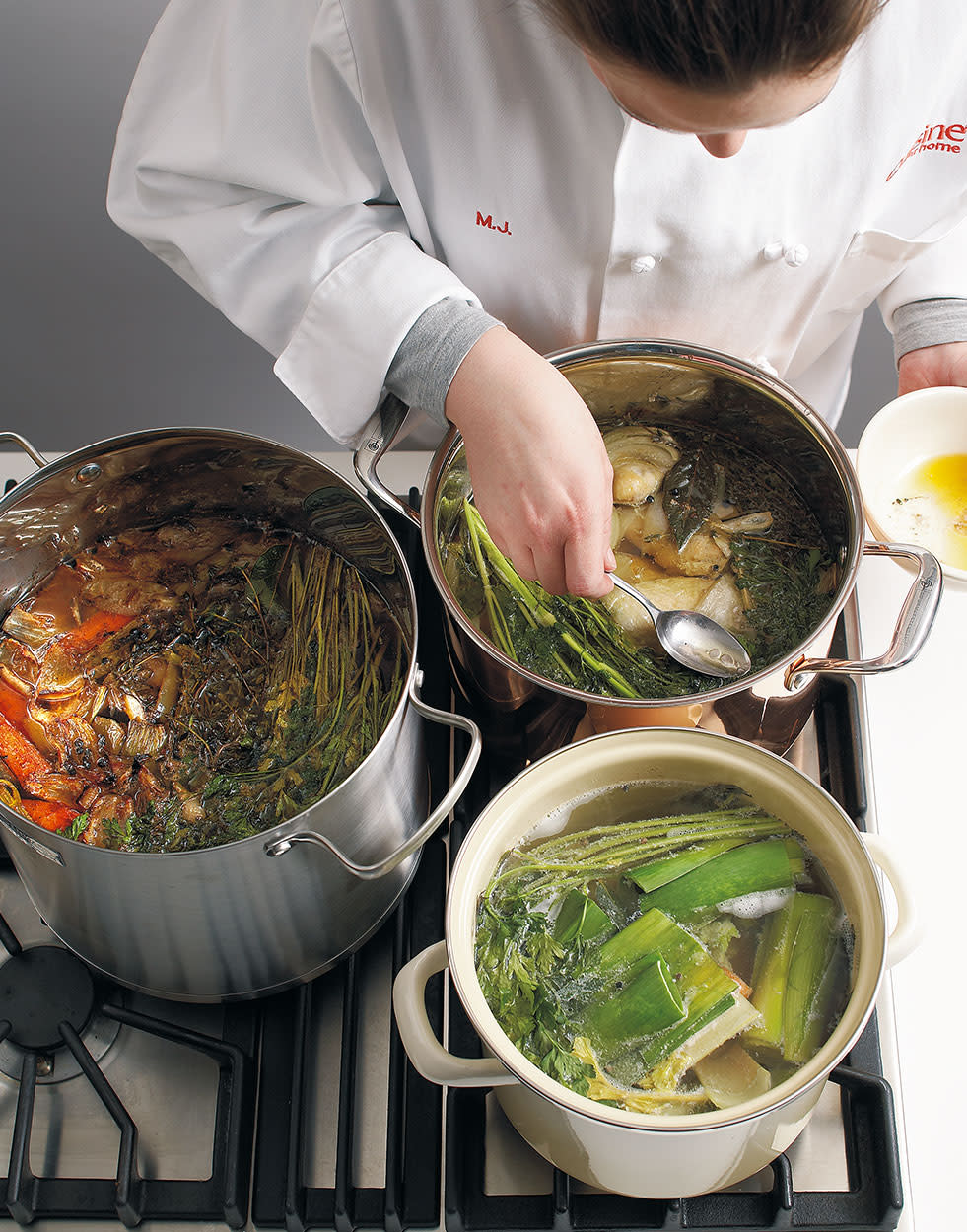
(Note: As an Amazon Associate, we earn from qualifying purchases made through affiliate links.)
The stock story
Stock isn’t difficult to make. Though some stocks require hours of simmering to give up their flavors. And note, stock and broth aren’t the same thing.
Stock is made with bones, and they’re the most important ingredient because they add body and richness. As the bones simmer they release collagen, which is converted into gelatin. Gelatin enables finished stock to enrich your sauces, soups, and stews.
Broth, made from meat, has stronger flavor but lacks body. While there are lots of ready-made stocks and broths on the market, most are full of preservatives and sodium. When you make homemade stock, you’re in control of the sodium content and ingredients.
Taking stock of your ingredients
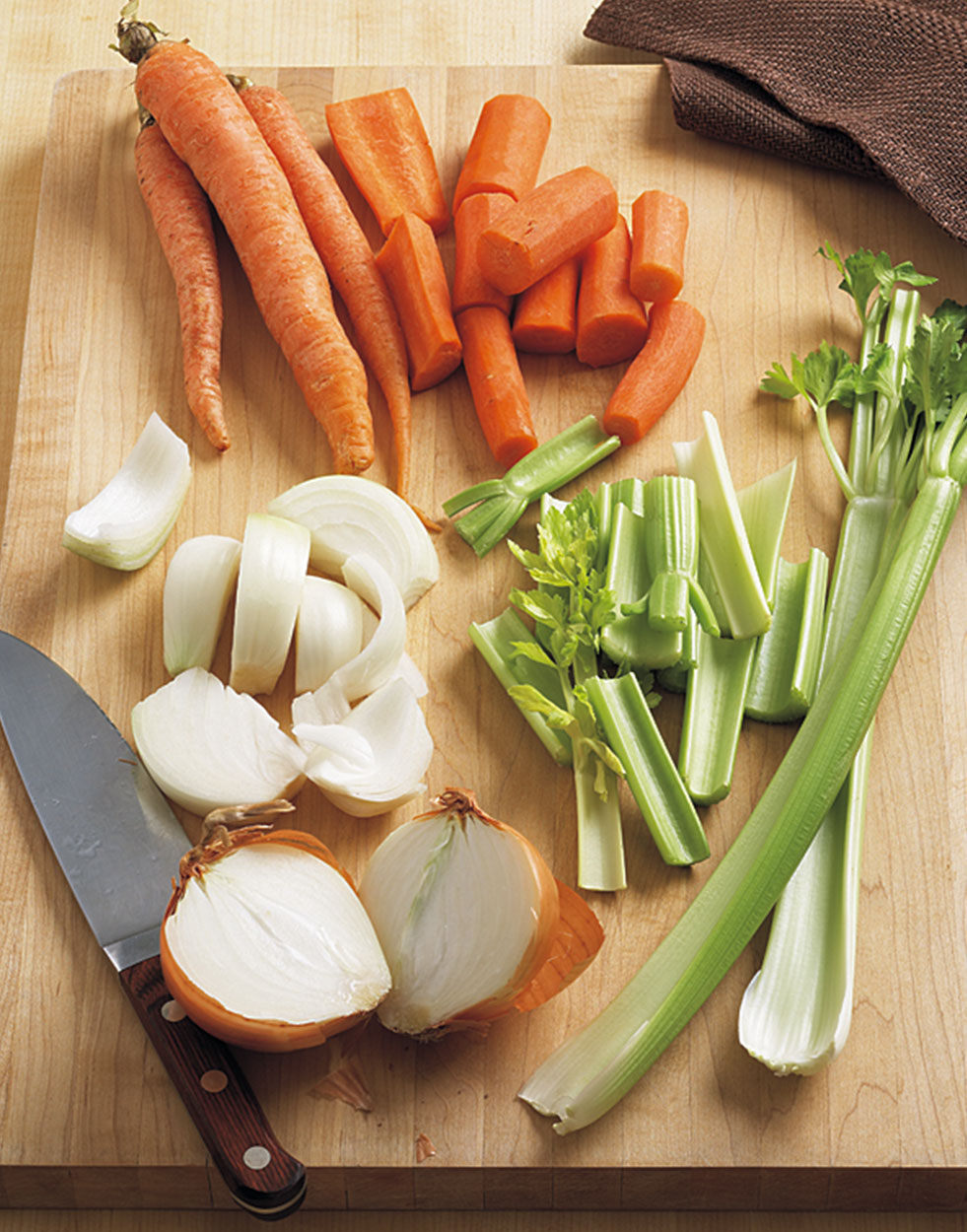
Mirepoix [mihr-PWAH] is the French term for the vegetables used in stocks. It’s traditionally a mixture of 50-percent onions, 25-percent carrots, and 25-percent celery by weight. The longer the cooking time of the stock, the larger the vegetable pieces should be. For Beef Stock, the vegetables should be coarsely chopped. For stocks that cook a shorter time, like Vegetable Stock or Fish Stock, vegetables should be cut into smaller pieces to extract the most flavor from them.
Often wrapped in cheesecloth, the seasonings included in stocks are referred to as a bouquet garni [boo-KAY gahr-NEE]. The standard seasonings are peppercorns, bay leaves, thyme, and parsley. Because stocks are cooked long enough to extract all the flavor from their ingredients, these seasonings can be used whole. Most are added to stock at the beginning of cooking, but if you prefer a stronger flavor you can refresh herbs and other seasonings during cooking.
We don't recommend adding salt when making homemade stock. That’s because the flavors in stocks come from bones, meat, mirepoix, bouquet garni, and sometimes wine. And since stocks are the foundation of many dishes and can be referred to as an “in-process” food, you can’t be sure of their end format. Thus, if you’ve salted your stock while making it, and later want to reduce it for use in a sauce, the reduction intensifies the salt and can result in an overly salty finished food. Our best advice is to err on the side of caution and salt your finished dish rather than your stock.
Equipment Corner
A stockpot isn’t a necessity, but consider investing in one. Tall and narrow, its shape and limited surface area slow evaporation for more flavor in your stocks. We prefer using 6- and 8-quart stockpots. (Check out this great mid-range Cuisinart stock pot.) Any larger requires too much water, which dilutes the flavor of the finished stock.
Six Principles For Making Stock
1. Liquids: Covering bones and vegetables with cold water is key. Hot liquids cause bones to release impurities that dissolve into the stock with the fats, rather than allowing them to bond and rise to the surface to be skimmed away. These impurities muddy the color and flavor of stock, making it fatty and greasy. Hot liquids don’t do vegetables any favors, either. They cause vegetable starches to gel, forming a barrier that impedes the extraction of flavors.
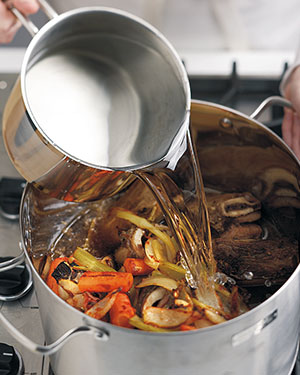
Add more cold water as evaporation occurs and as bones and vegetables are exposed. Cold water prevents impurities that have risen to the top of the stock from melting and redispersing back into the stock.
2. Simmer, Never Boil: Keep your stock at a simmer with gentle bubbles just breaking at its surface. You want to avoid boiling because as the bones heat they keep releasing proteins and fats. If these are boiled, they’re churned back into the stock, making it cloudy and greasy. A greasy stock has dull flavor, which will be apparent in any sauce or soup made from it.
3. Skim, Never Stir: Stirring stock is a no-no. It won’t ruin the stock, but moving the liquid around or scraping down the sides of the stockpot reintroduces impurities. There’s never a need to stir a stock during simmering.
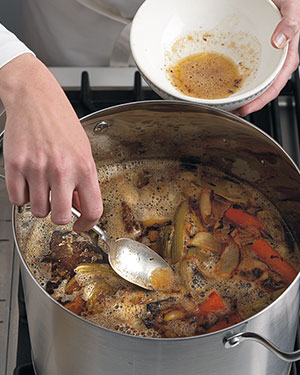
Gently skim fats and impurities from the surface of the stock every half hour or so using a spoon to remove the foam that rises to the top.
4. Straining the Stock: After extracting as much flavor as possible from the bones and vegetables, pour the contents of the stockpot into a strainer or fine mesh sieve, and allow the liquid to drain; discard the solids.

Don't press the solids; allow the stock to drain on its own.
5. Cooling the Stock: Before storing, stocks quickly must be chilled to below 40-degrees to prevent bacterial growth. Use an ice water bath or transfer the stock into small uncovered containers and immediately refrigerate.
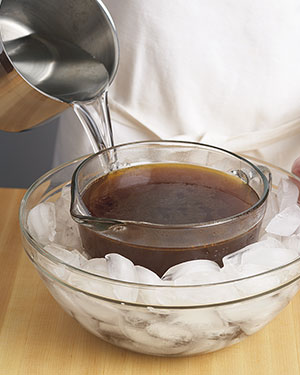
To set up an ice water bath, place a bowl of stock inside a larger bowl, surround it with ice cubes, and add water to the ice cubes. Be sure to stir the stock periodically to help in the cooling process.
6. Storing the Stock: Stocks will keep up to one week in the refrigerator. If you’re not going to use the stock for a few days, leave the fat layer on the surface intact to keep the stock fresher.
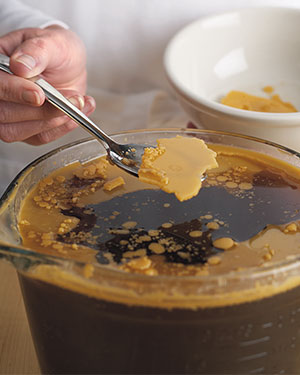
Before using the chilled stock, or before putting it in smaller containers to store in the freezer, discard the layer of fat that has risen to the surface.
Stock Options
Now that you understand the universal rules of stock making, put your new skills to work in any one (or all) of these five homemade stock recipes:
Then once you've made whatever stock(s) you choose to make, homemade soups, stews, and more are easily within your reach.
Product Recommendations
Interested in cooking? Need some supplies?
Check out some of the tools we like. All products featured on Cuisine at Home are independently selected by our editors; we may earn an affiliate commission from qualifying purchases through our links.